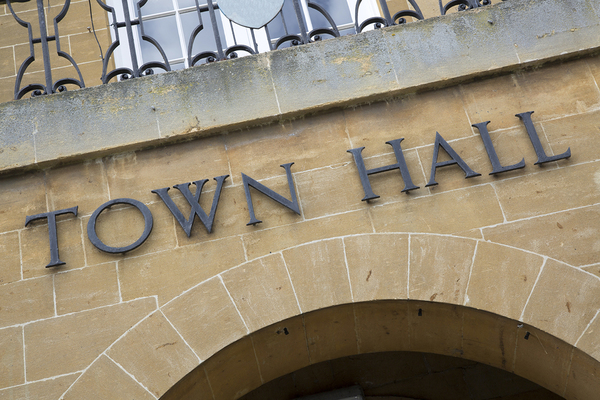How council housing finances have run down and what can be done about it
As councils defer housebuilding due to dire financial straits, John Perry, policy advisor at the Chartered Institute of Housing, looks at potential investment plans
News that three London councils have deferred new housebuilding projects was another of the red flags that signal the worrying state of council housing finances. One of the three councils, Southwark, is leading an unprecedented initiative by 20 of the biggest local authority landlords to draw the issue to ministers’ attention.
Their interim recommendations include changes to the Right to Buy, more investment, rescuing stalled projects and removal of some of the restrictions which prevent councils from investing.
They call for investment plans that would support new build and would also allow them to achieve net zero and higher standards in the existing stock.
Perhaps the most important recommendation is to establish a new, fair and sustainable model for councils’ Housing Revenue Accounts (HRAs), including a stable rent policy and adjustment of HRA debt. Coincidentally, a new report by the Chartered Institute of Housing and Savills sets out exactly what such debt adjustment might involve.
Council housing finances were the subject of a settlement between the government and local authorities in 2012. Before that, HRAs were paying significant rental surpluses to the Treasury, peaking at more than £700m in 2011-12. The settlement capitalised these future surpluses into additional debt of £8bn, taken on collectively by the 169 councils which then had HRAs (now down to 158).
The settlement was based on various assumptions about the future. A decade later, these assumptions have been invalidated by subsequent policy changes and external factors, leaving councils with debt that they can no longer sustain.
The biggest factor, unsurprisingly, is rent policy, because not only has it departed from the original assumptions, but it has even included years when rents had to fall relative to inflation. Steve Partridge, director of the affordable housing consultancy at Savills, who worked with the CIH on the report, estimates that councils can collectively sustain around £10bn less debt now than would have been the case if rent policy had stayed as envisaged in 2012.
“The biggest factor, unsurprisingly, is rent policy, because not only has it departed from the original assumptions, but it has even included years when rents had to fall relative to inflation”
Other factors include material changes in the standards expected for social housing property, including building and fire safety issues in many cases, enhanced regulatory scrutiny, greater loss of stock than expected (primarily through the Right to Buy) and higher than forecast inflation, which has particularly affected repairs and maintenance in social housing.
These further factors together reduce councils’ capacity to sustain debt by another £7bn. Overall, while councils were expected to have enough income to pay down a collective debt of £28.6bn (adjusted for the change in the number of local authorities, and including, of course, their pre-2012 debts), now they can only collectively pay down an estimated £11.3bn.
Not surprisingly, almost every council is struggling to do so.
The CIH report calls for a revised HRA settlement, based on updated and detailed assessments of councils’ income and costs that would clarify both the overall figure for sustainable debt and give precise estimates for each authority. Such a review was provided for in the original settlement. This would imply shifting the unsustainable part of councils’ debt – about £17.4bn on our initial calculation – onto the Treasury’s books.
This is clearly a massive amount, which, in future, would be paid for by taxpayers instead of from rents, but it is an indication of the weight of the debt burden loaded onto local authorities and highlighted in the report from Southwark and 19 other councils.
If it is unlikely that the government will tackle this problem in one go, it can nonetheless take several steps to mitigate the burden. For example, adjusting debt levels for changes in rent policy is a straightforward calculation for each authority, while grant solutions might work better for changes that affect some authorities disproportionately.
“Action is needed urgently to prevent councils’ HRAs from suffering similar stress to that afflicting their non-HRA finances, which has resulted in several authorities serving Section 114 notices, meaning they can’t meet their financial obligations”
The Southwark report calls for an initial payment in compensation for the most recent change in rent policy, covering 2023-25, of an estimated £644m. It also calls for rent convergence to resume (the process where individual rents are brought in line with government-set ‘formula rents’). And it calls for a reduction in discounts and related reforms to the Right to Buy to stem the loss of homes. This is something the government has now promised to consider.
Action is needed urgently to prevent councils’ HRAs from suffering similar stress to that afflicting their non-HRA finances, which has resulted in several authorities serving Section 114 notices, meaning they can’t meet their financial obligations.
HRAs do, of course, have a constant stream of rental income, but, in many cases, they can only meet the costs of their debt by making unsustainable cuts in repairs and improvements – at a time when government and regulatory pressure is to do the opposite.
The lesson from both the Southwark and CIH reports is that urgent action is needed to mitigate the effects of unsustainable debt. Having tackled the emergency, councils and government could then work together on a plan to make council housing sustainable again and, indeed, for it to contribute substantially to the government’s new target of building 370,000 new homes per year.
John Perry, policy advisor, Chartered Institute of Housing
Sign up for our Council Focus newsletter
Already have an account? Click here to manage your newsletters













